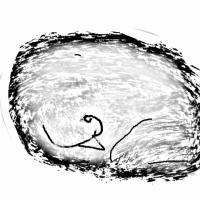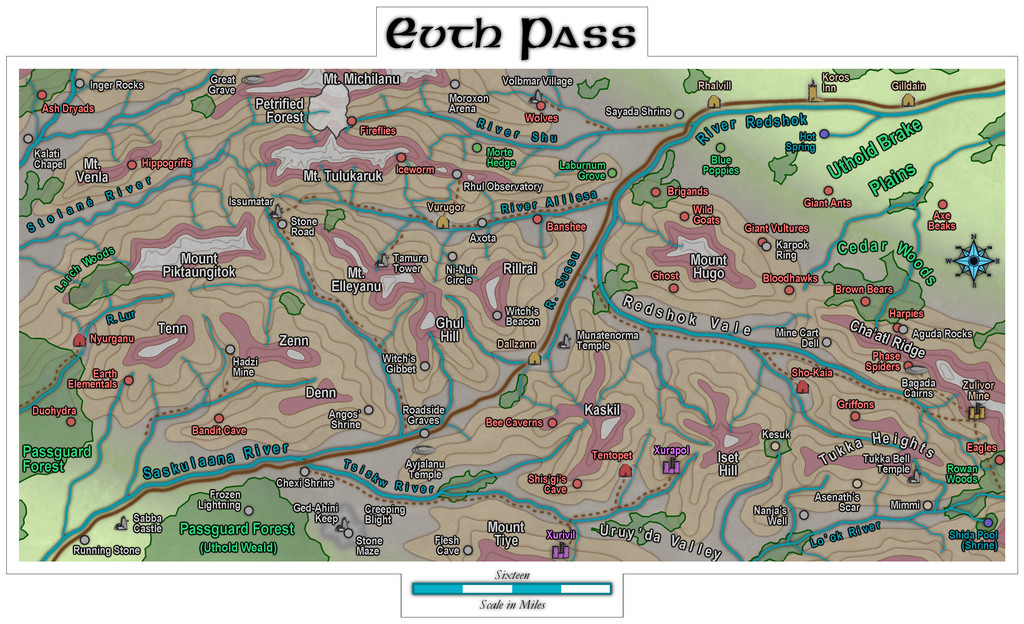
Wyvern
Wyvern
About
- Username
- Wyvern
- Joined
- Visits
- 3,085
- Last Active
- Roles
- Member
- Points
- 5,301
- Rank
- Cartographer
- Badges
- 24
-
Hi from Reddog
Welcome aboard Reddog!
Yep, following the tutorials and working through the manual's exercises is definitely the only useful way to start. Critical comments about the program you'll find scattered over the Internet elsewhere are all about people NOT doing this, and blithely assuming the program's going to be identical to the basic graphic manipulation programs they've "always" used before. IT ISN'T!!! This is actual CAD mapping and draughting software, and if you're not familiar with how that operates, you will struggle. I did, certainly, until I watched some of Joe Sweeney's videos (there weren't any others at that stage, as this was some years ago, back when it was still CC3, not the current CC3+).
As far as map scaling's concerned, forget ALL about what size you need this or that bit of the map to be once you have it printed out, as this is IRRELEVANT to the creation of maps in CC3+. What you MUST do is create a map to the actual size the map's supposed to be using the relevant real-world map units - which for floorplan/Dungeon Designer style maps are either in feet or metres (you can decide which during set-up for that map). Make sure everything fits in your map to that scaling only. If the grid squares are meant to represent 5 feet, for example, make them 5 feet square in your CC3+ map.
When you've finished the map and want to print it out, that's the first time you need concern yourself as to what size things will be in the physical, printed-out world. If you need advice on that, or anything else connected with map scaling, see this excellently thorough blog post by resident expert and Forum mod Remy Monsen, which tells you all you'll need to know and more on the matter!
-
WIP Ruins of Charn
@Don Anderson Jr. asked: The floors look a bit disheveled for some reason. Maybe someone can give some insight.???
As Helen suggested, the book makes clear the place is almost a ruin. Essentially, Charn's entire global population and all other life was destroyed in a single, momentary event a very long time ago, leaving just one living humanoid there (the person who caused it). The buildings are all pretty ruinous, as having been left quite unattended ever since, to the point where bits simply collapse if there are any louder sounds, and some have done so already, so there's rubble in places, etc. It's all looking pretty realistic to that currently.
-
WIP: ICS Immaculate Radiance
Don't forget an alternate bridge to command the vessel if it's liable to see combat. Even if the primary bridge is buried deep, that's no guarantee it'll survive the first minutes of an encounter, as it's the classic place to aim for if your targeting is good enough.
Bridge location is heavily dependent on the tech too, as Don notes. Normal windows are useless for anything other than pretty views of whatever's close-by, for instance, so some tech for even "normal viewing" is essential to avoid endlessly wondering if that faint star's a faint star, a massive enemy vessel or a missile heading directly at you. Even massive craft become near-invisible dots at astonishingly tiny interplanetary distances after all!
Dalton, not sure what you're meaning by "texture for the hull that resembles the white complex details of a Star Wars ship", as I thought there were various bitmap options for the rectangular plate effects on imaginary craft like this in Cosmographer already. The Dundjinni Archives have more variants too, and Storyweaver Highspace, for instance. Maybe you're meaning some other kind of texture though? (I'm not very up on Star Wars tech, as I've long found it too unbelievable to be interesting.)
-
WIP: ICS Immaculate Radiance
Been a very long time since I did any spacecraft designs. General principles still apply though, remembering this is a self-contained, self-reliant unit, so essentially you need everything you'd have on a normal ship with a sizeable crew - they need to eat, sleep, stay clean (clothes and person; toilets as well), exercise, medical facilities, a means of controlling each system on the vessel, a means of communicating with other vessels and shore/planetary/orbital bases, a means of carrying out the vessel's primary and subsidiary functions, emergency escape facilities, emergency handling facilities (e.g. fire, flood, general damage control), a means of observing whatever is around them outside the vessel, and as you obviously already have, propulsive engines and fuel sources. This list is not exhaustive! And almost all this has to fit within the outer hull somehow.
Spherical and rounded hull shapes are a nightmare to design for. About 40 years ago, I drew out by hand a spherical free-moving spacecraft intended as a planetary defence vessel, one of a fleet, and that was horrendous, as (well, if you're me anyway) I had to keep checking how the outer circumference affected the internal space for different parts of every vertical level, and having to keep changing things because they'd no longer fit at the size intended, and so forth.
Unless there are strong reasons not to do so that make sense in-game, there's no physical necessity from our reality to have streamlined forms for spacecraft at all. Doesn't look so "Hollywood movie pretty", I grant you, but...
-
Community Atlas: Map for the Duin Elisyr area, Doriant
Yes, this can be a problem with some of the topographic mapping styles, and it's not possible to solve them all the same way (as they don't all use effects that will work equally well with things such as transparency). Luckily, this one does work that way.
Back at the mapping, the fourth quadrant has now been completed, and various items tweaked to a greater or lesser extent that seemed to need them. Names have been added for the main rivers and uplands, as appropriate, and a few more smaller patches of woodland "grown" in parts:
Then I added the title, scalebar and compass rose, and did some tests with the texture options activated. This image shows both in place:
While that looked sort-of OK, I wasn't very satisfied with it, so I tried various alternatives, ultimately deciding to have two separate sheets with the texture on them, because doubling-up helps accentuate the "water-colour-paper" look, and I could also restrict the textured areas to the newly-expanded upper and lower map borders only. That's not possible with the all-map Texture effect. Which brought me to:
However, I wasn't convinced this was sufficiently clear, as apart from darkening the map in general, it also further blurs everything. So I'm now thinking to leave the texturing options off entirely:
A few more minor adjustments are likely while preparing the notes to go with the Atlas version. At present, I'm intending to add some bridges to help clarify where the fords are over the lesser rivers, for instance. This is though probably close to the final version now. Until I find I've missed something, that is!









